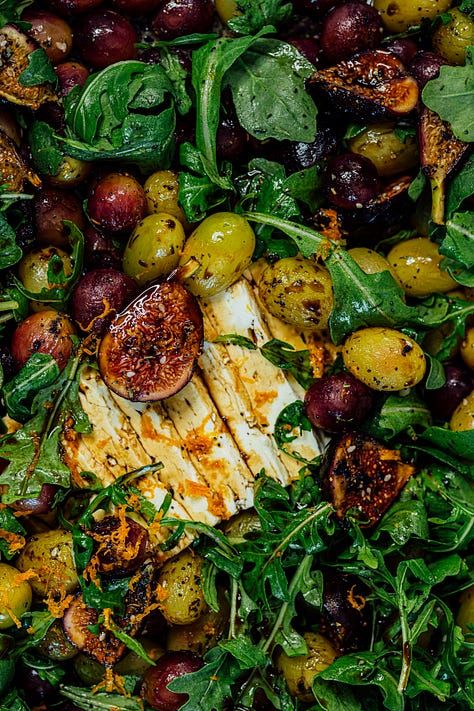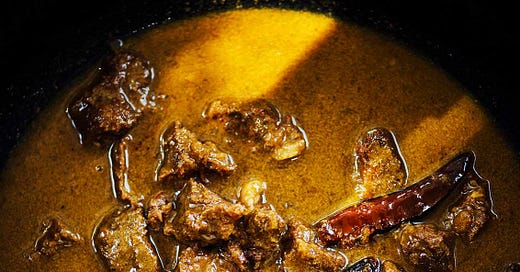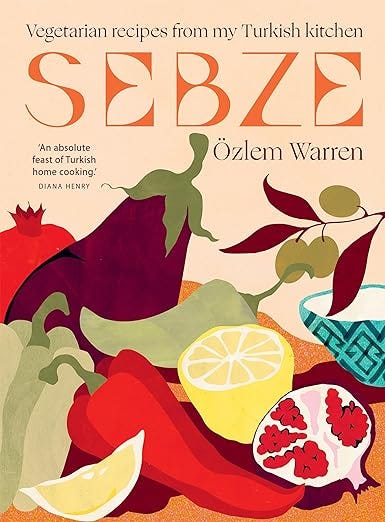Welcome to The Flavor Files, a newsletter that explores the intersection of science and food. You’ll receive a new recipe, links to more recipes, food and science news, and more each week.
If you’d like to learn more about the different Subscription options available to you, click here.
📗 My new cookbook, Veg-Table, is out now and available to order wherever books are sold. You can get your copy here. The book focuses on the science of vegetables and includes 100 recipes for cooks at different skill levels, with several tips and tricks to make your cooking easier and fun.
If you own a copy of the book, please leave a review on Amazon (regardless of whether you bought it there). Reviews on Amazon make books more visible to people.
🙏🏾 I appreciate your support!
Hello!
This was a monumental week. We reached more than 30,000 subscribers on Substack! I’m so proud of this small community we’ve established and thankful you’ve enjoyed my weekly newsletters.
This week, my Substack feed was riddled with debates about cookbooks and the demand for photos, and some writers were upset about this. As someone who styles and photographs their books and as an avid collector of older cookbooks without photos, I feel we need to accept the reality that there is a generational difference and a difference in how people absorb information from cookbooks. When I write a cookbook, I aim to make sure I can teach people something new and they can cook my recipes. The instructions, head notes, and photos all serve one purpose: I give the reader all the tools to execute the recipe successfully. It’s no different than a class where the teacher provides several tools to help students learn. QR codes with videos are one of the new features that can help people cook recipes in a cookbook. Just because something wasn’t the norm decades ago doesn’t mean we can’t adapt to help people today.
I’m sure, like most debates, this topic will continue and pop up again.
Speaking of debates, lab-grown meat is a controversial topic. The state of Florida just banned sales, but I’ve also noticed a decline in its popularity on menus in American restaurants. It looks like I wasn’t wrong, and it has much to do with the industry's economics and consumer behavior.
Labs that grow cultured meat still have a long way to go. When I worked in labs, some of my experiments involved cell culture. We used a lot of disposable plastic to create and grow the cells, store growth media, etc. Single-use disposable plastic is popular because petri plates, pipettes, culture flasks, etc., all come pre-sterilized and wrapped, and it also reduces contamination since they are not reused like glass. Historically, Fetal Bovine Serum (FBS) from calves is one of the most popular growth mediums for animal cell cultures because it contains the necessary nutrients and growth hormones to help them grow. Because the techniques used in these lab-meat companies are proprietary information, I can’t tell you which companies are still doing exactly what behind the scenes. However, I did find that efforts have been made to create an alternative option, as reported here in Nature Food, and it’s likely that some companies are using this to grow their stem cells for tissue culture. How much of this information is made public or even to chefs who decide to use their meats in their restaurants is up for debate. Is it really ethical and as environmentally friendly, as we’re led to believe? More transparency is needed. Then there’s the question of the long-term effects of lab-grown meat on human health, such as diseases such as cancer and prions. A few weeks ago at the Culinary Institute of America, I spoke with a journalist who writes about lab-grown meats, and I was surprised that many of these questions hadn’t been answered or that people weren’t aware.
Out of curiosity, I’ve tried a couple of these meats, and the one thing that unites them all - is that they will always ask you to use non-stick cookware when cooking them. If you use cast iron or stainless-steel cookware, these meats stick tightly to the surface, get burned easily, and lose their texture. Regardless of how much oil you use or how hot the pan is, these meats don’t cook nicely on these pans; you must use non-stick cookware. Non-stick cookware comes with its own set of health issues.
This form of lab food production method is here to stay and will evolve since our planet can only support so much. However, lab-grown meats have a long way to go, and businesses also need to start thinking about what happens in our kitchens, our bodies, and their impact on the planet. We also need more long-term health studies.
I’m excited about this new vegetable-centered cookbook Sebze by the U.K.-based author Özlem Warren, who teaches Turkish cooking. The recipes are vibrant and full of soul. You will love this one as much as I do!
Several new fun features for paid subscribers are coming to the newsletter. Here are some new features to look forward to in your inbox.
I’m launching a once-month chat for paid subscribers. We’ll discuss various topics, from kitchen hacks to cookbooks. Do you have recipes you love? Share them with the group!
Special recipes for paid subscribers only.
Older newsletters will be paywalled and archived after 2 weeks.
More polls and quizzes!
Because of the huge and exciting response to the special birthday offer on subscriptions, I’ve extended the period to May 12, 2024! Use the link below to take advantage of the offer. It makes an excellent Mother’s Day Gift! Thank you for supporting my work.
Thank you, and have a great week,
Nik



My favorite part of every new month is sharing my curated recipe collection with you. This month, there’s a Madras Beef Curry, Cauliflower Chaat Tacos, Roasted Fruit Salad (From Veg-Table), and more. I also threw in a few mango recipes because the joyful season continues.
Does Soaking Beans Reduce Farting?
I love it when folks don’t shy away from honest conversations about food that affects us. So, I’m a big proponent of soaking beans before cooking them because it reduces the gassiness experienced. Regardless of whether you soak or brine, you must remember to discard the soaking water and the cooking water (if you can), as that’s where all those fart-producing carbohydrates like raffinose we can’t digest go. If that fails, there’s always Beano and Gas-X (they’re not paying me to say this).
Why Extra-Virgin Olive Oil is Rarely Used to Make Emulsions like Vinaigrettes and Mayo and How to Fix it
While I developed this method to deal with extra-virgin olive oil, it also works for mustard oil. Mustard oil behaves like olive oil in emulsions, making bitter-tasting vinaigrettes and mayo. The boiling water method will take care of the bitterness without affecting flavor.
It’s not a test, just a fun quiz based on some of the previous newsletters. I’ll share the answers next week. The quiz will be free this week, but it will only be available to paid subscribers in the future.









